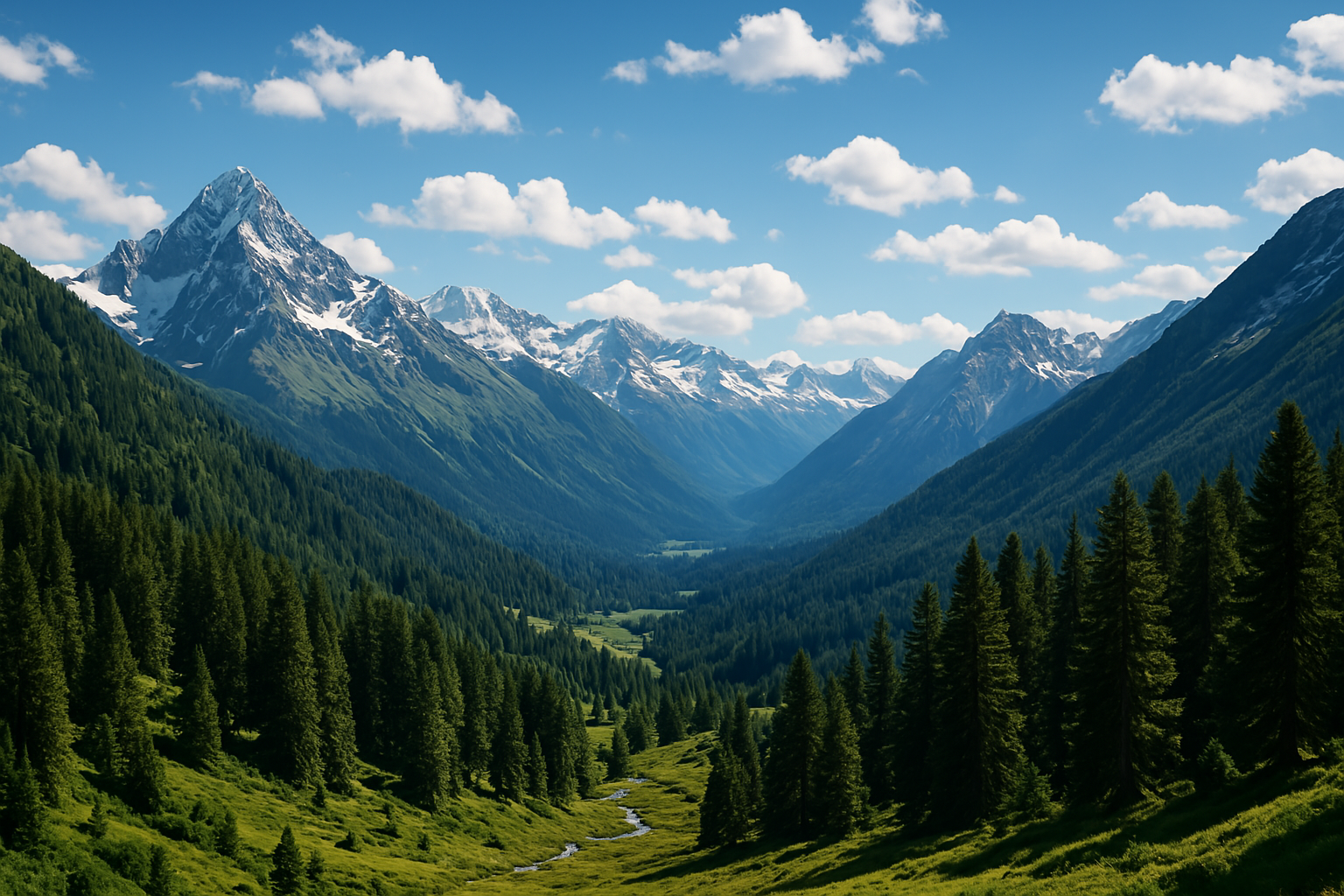Valley of Flowers, the name itself exudes a sense of epic, like a land of deities, immortals (and undeads). When I first heard of it, I was transformed into a paradise of misanthropes that promised prolonged lack of contact with what we optimistically call “civilization”. But visiting it was not easy. The rugged terrain limits your speed and you need enough time in hand with a lot of prior planning. Also, the place remains hospitable only for three to four months during the summer. But the bigger question was… should a lethargic, morbid and pathetic metropolis dweller even try to tread this difficult path all alone?
Nevertheless, having done it, I think if one has to experience nature in its most pristine form, this is the place to be in. It may also be a good idea for the ones who want to push their physical limits or those who are gradually turning obese or those who want to turn anorexic. However, I would not suggest this trip to the people with serious health or fitness issues as it is a physically demanding trip. But the biggest issue faced by the place is due to the people who cannot recognize a dustbin. They should also stay away (In fact they shouldn’t go anywhere).
Valley of Flowers, and in fact the entire route leading to it, is a photographer’s paradise. You don’t have to scratch your head and ponder over angles, frames, exposure, composition and everything that haunts novice photographers. Let me now provide a blow by blow detail of this trip interspersed with some of the images etched forever in my memory as well as my hard disk.
Mumbai to Rishikesh:
I took the Rajdhani Express from Mumbai to Delhi. Apart from a few outbursts from the irritating children nearby, the ride was eventless. But I never got the value of over intrusive and compulsory catering which seemed to be the only factor justifying the high ticket price. At Delhi I made a general ticket and went to Haridwar boarding another train and realizing that often headline grabbing places like Deoband and Roorkie also fall in the same route. As the train approached Haridwar, the landscape started changing gradually from dusty and crowded Indian plains to more welcoming and serene sub-Himalayan terrains.
At Haridwar, the most useful mode of transport turned out to be the gigantic autorickshaw (or the miniature bus if you like the glass half empty). These three wheeler bullies dominate the roads and can carry 10-15 people at a time depending on the desperation level of the drivers. The more disturbing issue was that all of them love to blow the horn incessantly. Nevertheless, if you can pay around 100 rupees, you can have the whole thing for yourself and that is what I did. It took around 30 minutes to reach Rishikesh through the highway sandwiched between dense forests. The driver took me to a budget hotel that charged 400 rupees for the night. It was nothing to write home about but neither was I looking for one. It was already 5 pm and after the check-in I asked the same driver if it was possible to visit some site before it is too dark. He took me to Lakshman Jhoola, a hanging bridge over the river. It also has a conjoint twin called Raam Jhoola nearby. Monkeys rule the place and if you want, they will get rid of your lice too.
The driver cum guide advised me to cross the bridge and visit a certain temple. As it can be seen below, considering the stairs as well as my religious zeal, I decided not to follow his advice.
Rishikesh-Rudraprayag-Chamoli-Joshimath-Govindghat
Rishikesh is at the foothills of the mountains. After Rishikesh the straight roads gradually transform into serpentine spirals. The next morning I took a shared car to Rudraprayag. The ride was smooth but progress was slow and it set the tone for the rest of the trip. Due to road conditions and difficult terrains no vehicle can move over 30 kmph. Also for the same reason there is no provision of overnight buses. I was a bit lazy in the morning and hence I could only cover up to Rudraprayag, a place still haunted by the memory of the hunter Jim Corbette. The good part was that the shared car cost me around 100 rupees, far lesser than what I was mentally prepared to pay. I checked in at the official tourist lodge called “Rudra Complex”. It was comparatively costlier at around 1500 rupees for the night but it was very comfortable and the balcony offered a good view of the confluence of the rivers Alakanada and Mandakini.
On the flip side, I could not watch the Wold Cup final between Spain and Netherlands due to a power cut. Nevertheless, the next morning also offered some good view of the Pandoraésque mountains.
The next day I planned to reach Joshimath from Rudraprayag. But as it turned out, it was easier said than done. I woke up late and missed the morning buses. Somebody suggested me to move to Chamoli and I found out that the rates of these buses are affordable even for peanut earners. So, I took the bus to Chamoli and despite my childhood history motion sickness, began to enjoy the increasingly greener landscape. But my enjoyment did not last long as a bus was diverted due to a landslide. Instead of its usual trajectory, it took a narrow and bumpy road where it moved at 10 kmph, remained only centimetres away from disaster all the while and finally dropped me at a village 2 kms away from Chamoli. However I did enjoy the brisk walk to Chamoli after the traumatic diesel cart ride. Chamoli looked like a sleepy settlement from the distance and my impression did not change upon arrival.
I had to spend the night at Chamoli in a cheap hotel (300 rupees) that overlooks the bus stand. As I surveyed the place, I realized that even the hotels were running low on supply due to the landslide. I spent the night anxiously but everything seemed fine the next morning. I took another bus and finally reached Joshimath, a slightly larger town bustling with activity. It has a military cantonment nearby. Army men, locals and tourists crowd the shops and restaurants. Also, if you are running out of cash this is probably the last place where you would find functional ATMs. You will also find travel agents, guides as well as information depots of the tourism department if you need them at all. As for myself, I consulted none of them. There is a ropeway from Joshimath to ski resort Auli but the route was apparently closed down at that point of time. I did not to spend too much time in Joshimath and quickly moved to Govindghat, the last spot in my route that can be reached by automobiles.
Now, Govindghat is the place where you begin to “feel” it. Despite their hilly charm, the towns before this were reasonably crowded and were not much different in texture from other average Indian towns on the plains. But Govindghat is sparsely populated and it only exists as a transition point for travellers who are either going to Valley of Flowers or go higher up the highway to Badrinath. I was now beginning to feel the drop in temperature associated with high altitudes and there was strange calmness in the area. More importantly, my phone stopped catching the signals there. Nevertheless, the view was jaw dropping. For the first time in my life I was witnessing a real mountain from such a close range. Mercifully the weather was perfect unlike the previous two days and the shadow of scattered clouds on virgin hills created a bewitching view which I think I could not successfully capture.
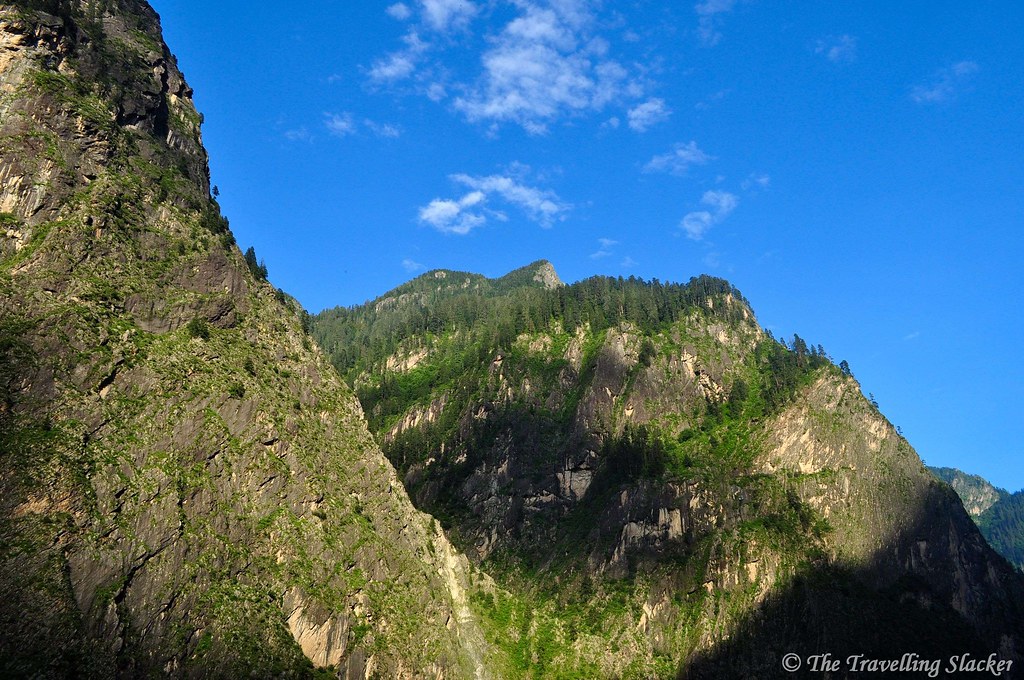
I got another budget hotel at a similar rate but this one did not even offer a TV. So I spent the night clicking random insects attracted by the lights in my balcony.
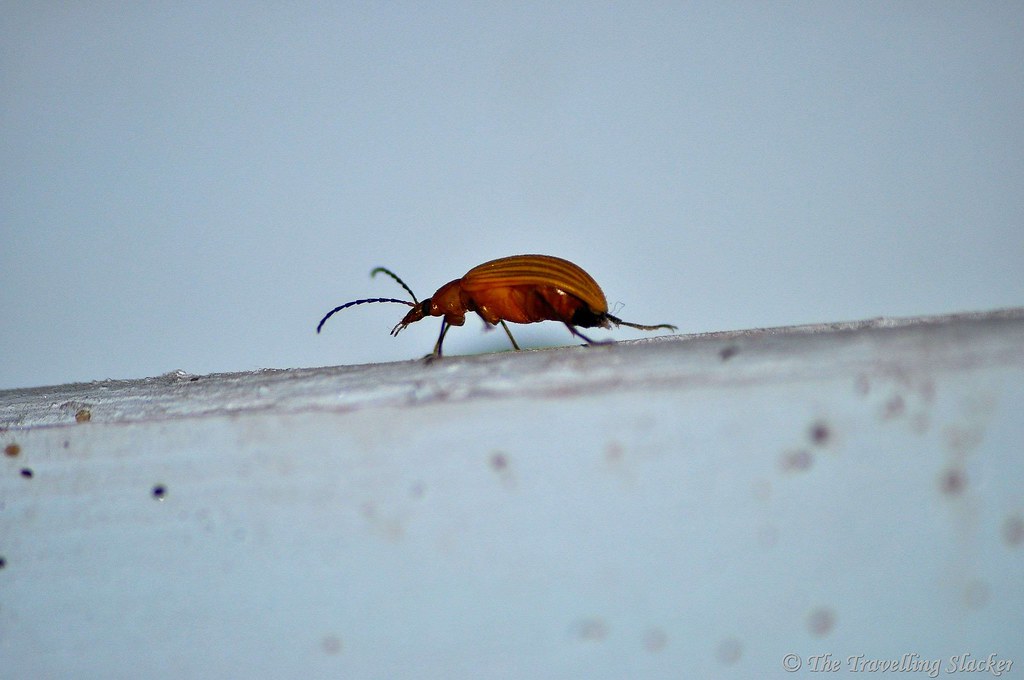
Govindghat to Ghangaria
The next they I finally started my actual ascent. From Govindghat you have to literally climb the mountains to reach the Ghangaria which is the last stoppage that caters to visitors of two major spots, the VoF and Hemkund Saheb, a Sikh shrine. There is a sturdy bridge over the stream and as I appraoched it in the morning I realized that the area near the bridge is far more densely populated with numerous restaurants and shops selling warm clothing, cheap travel gear and religious souvenirs for the Sikh pilgrims.
As soon as you cross the river, the steep ascent starts. It is a 13 km trek from Govindghat to Ghangaria and I thought I could trust my legs. But after a few hundred metres I was huffing and puffing and considering the fact that I will have to cover much more in the next couple of days, I accepted the only bailout plan available, the Mule. Yes, that equus half breed with confused parentage dominates the route and also it is the most expensive of all transport modes at 500 rupees for a one way trip to Ghangaria. Horses are also available but submissive mules seemed to be more appropriate in this route. Sturdy Garhwali men walk alongside and guide the animals through the route (and you are also supposed to pay for his food en route).
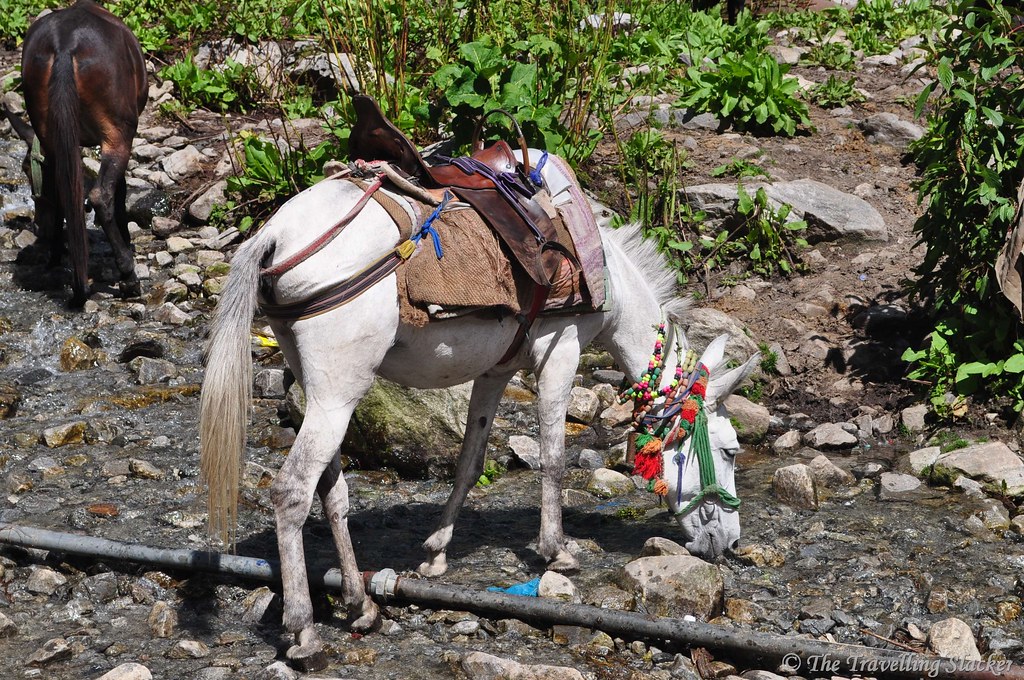
I had never ridden any kind of animal before. I was feeling sad for the creature but there was no other option. The journey began uncomfortably. The feeling was akin to sitting on the backside carrier of a bicycle, or even worse on the top tube. Nevertheless, I soon began to enjoy the magnificent view and lost myself in poetic thoughts only to be awakened by rude jolts. Also, some more pertinent questions kept creeping up, such as, what if the mule decides to commit suicide?
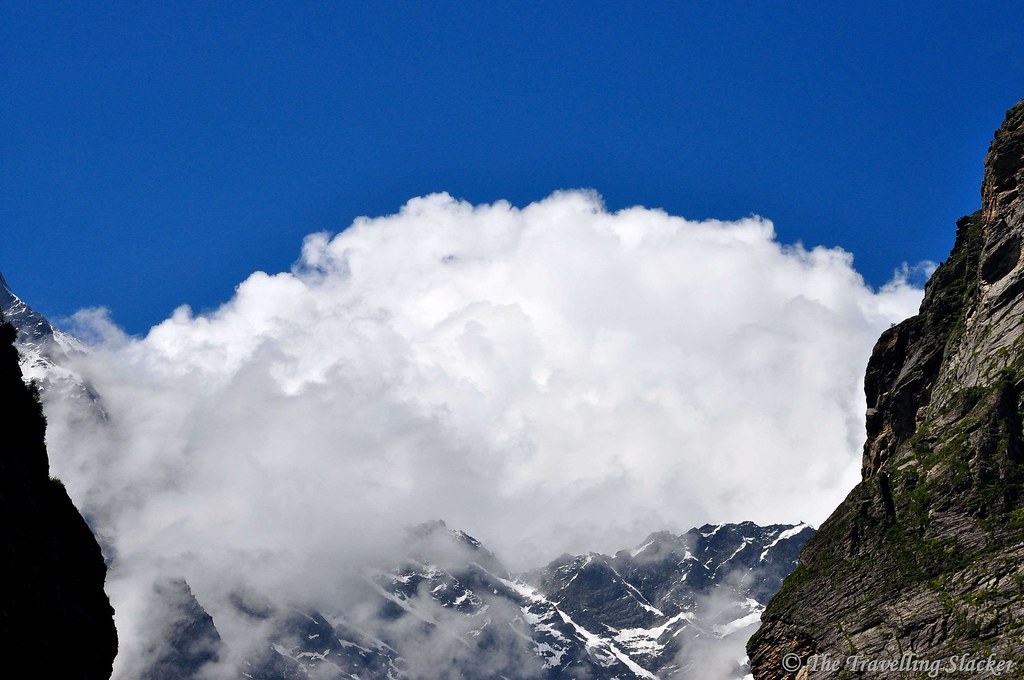
The journey took around 5 hours. But it should be noted that entire rote is lined with small shacks selling biscuits, chocolates, drinks as well as cooked food. Some of them also have satellite phone booths for emergency and more importantly it was heartening to see the strict measures taken by the administration to keep the area free of plastic. Finally when I reached Ghagaria it was afternoon and I took shelter in hotel (again similar rates). As I could see, Ghangaria comes to life only during the tourist season and closes down during the winter. But it is developed enough to support a regular flow of visitors going to Valley of Flowers as well as Hemkund. It has several hotels and lodges at budget rates and if you are bothered about food supplies have a look at the photograph below.
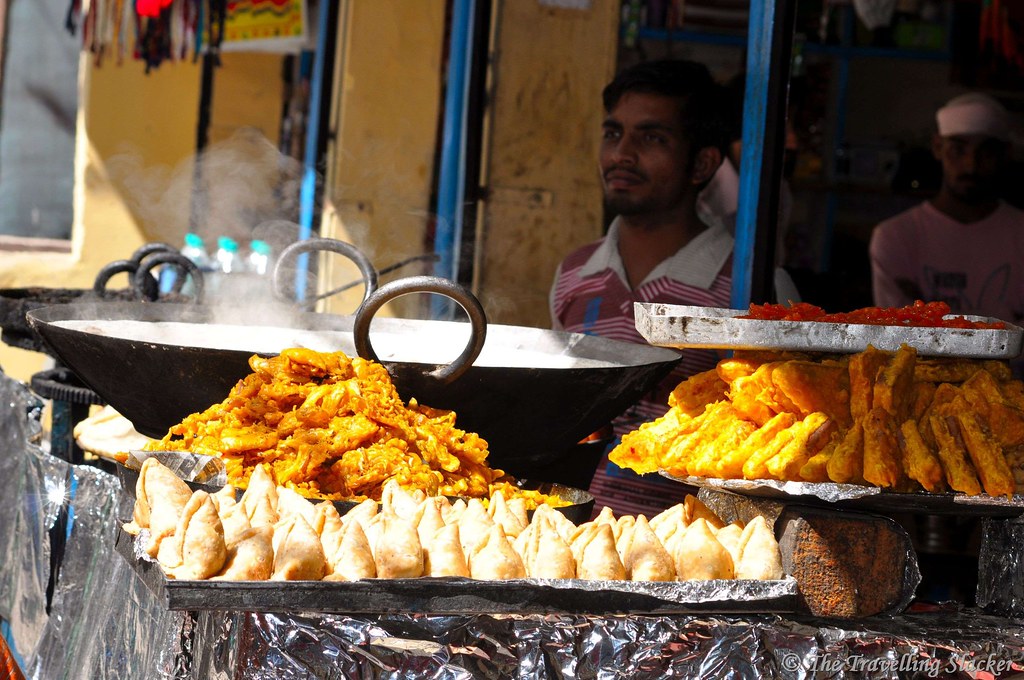
The place was completely dominated by pilgrims to Hemkund rather than eccentric trekkers to VoF and I did not really mind the same.
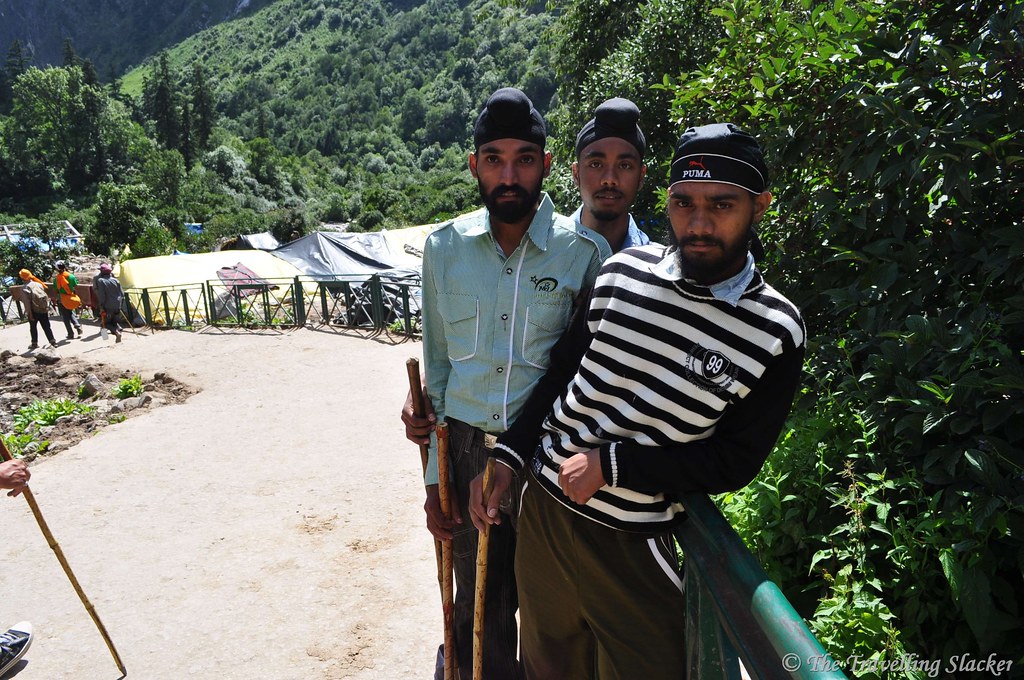
Despite the congested and crowded nature of the settlement, Ghagharia offers a brilliant spectacle once you slightly move out of the business area. After a couple of hundred metres from the market, you arrive at an open lush green area where the path bifurcates, one towards Valley of Flowers and one towards Hemkund. But that spot itself provides ample opportunities for photographers with a small waterfalls and colourful blossoms.
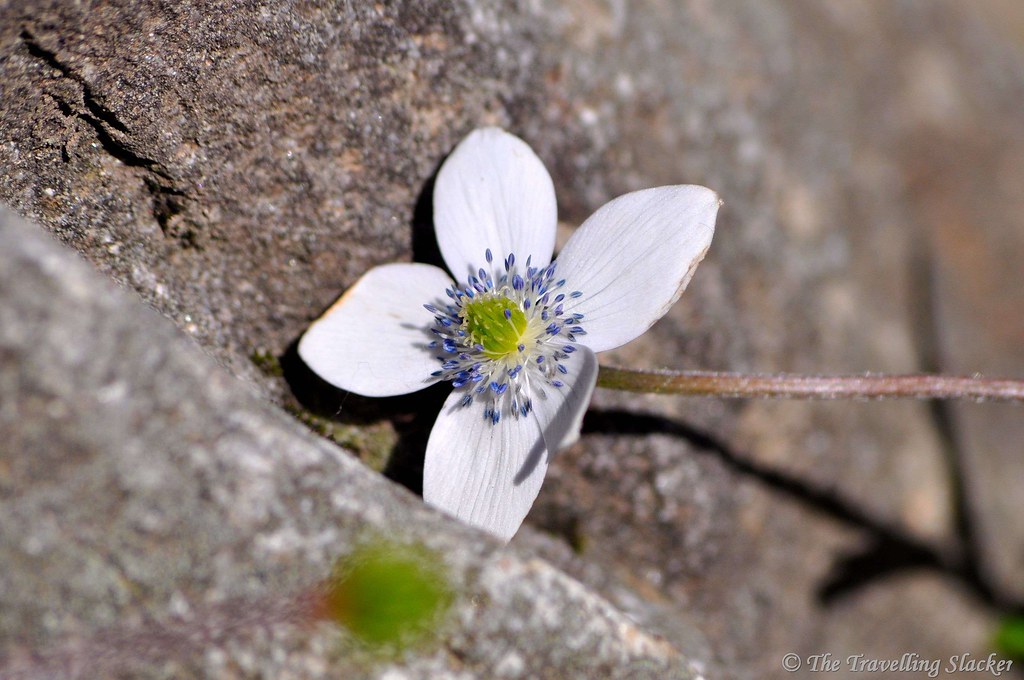
Valley of Flowers: The Final Destination
The next morning rains delayed me a bit because I was worried about my camera. I finally set out for my ultimate destination at around 10 am. Valley of Flowers is a protected area. It is a part of the Nanda Devi Biosphere Reserve, a UNESCO world heritage site. You have to pay a miniscule fee at the entrance (60 or 70 rupees as far as I remember). Once you get past the check post, you are on your own for the entire route and no equine help is allowed for the last lap because there can’t be any chit codes to salvation. It is basically an ascending trek around 4 kms long. Not actually a big deal for reasonably active people but can be daunting for some others. Let’s not discuss how it was for me. The good thing was that I was completely alone for most parts. Some others visitors set out early in the morning as I was informed at the entrance but none of them were visible to me. I came across a lyrically flowing stream, the legend of sleepy hollow, a working class bee exploited by its monarch and also found out how pine tree fruits look like.




